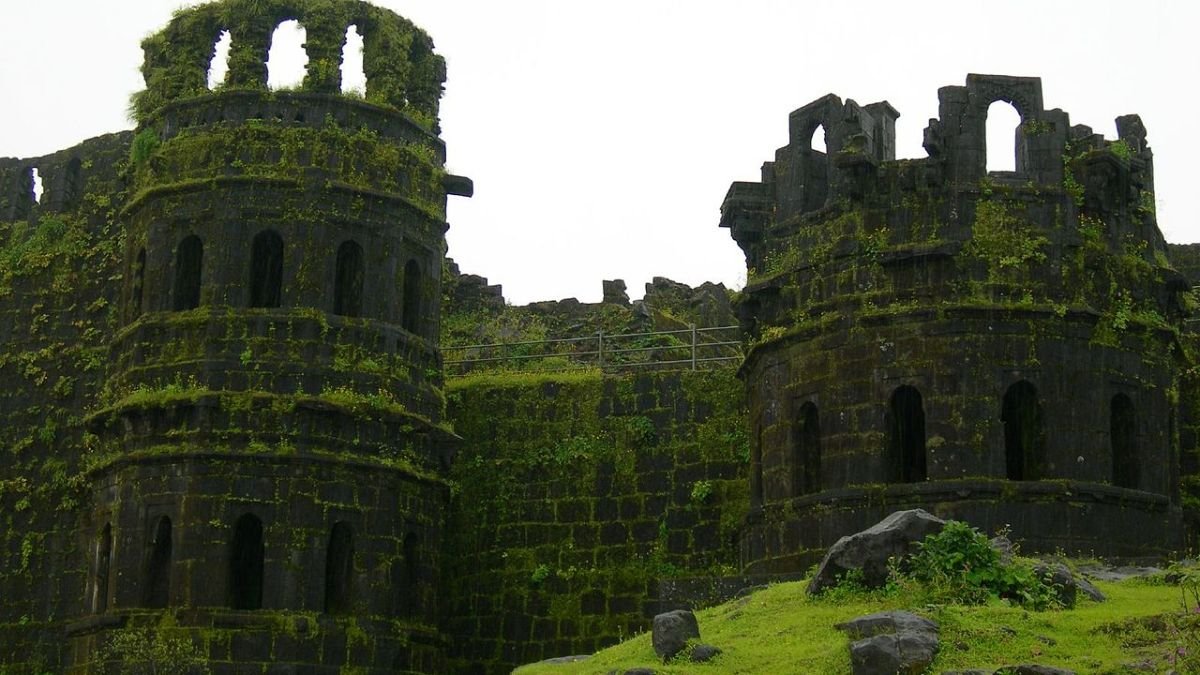High atop the windswept Sahyadri mountains, Raigad Fort stands as a proud sentinel of Maharashtra’s glorious past. More than just weathered stones and battlements, Raigad is a living symbol of Maratha resilience and the enduring legend of Chhatrapati Shivaji Maharaj. This comprehensive guide explores seven must-know facts about Raigad Fort—from its dramatic history and iconic architecture to up-to-date trekking advice, local weather, and essential travel tips. If you’re planning a trip or simply want to immerse yourself in Maratha heritage, read on for everything you need to know before visiting Raigad Fort.
History of Raigad Fort
Construction and Architecture
Raigad Fort, originally known as Rairi, was a hill fortress conquered by Chhatrapati Shivaji Maharaj in 1656. Its elevated location and natural cliffs made it nearly invincible. Shivaji transformed it with massive stone walls, grand gates, palaces, temples, water cisterns, and an ingenious defense system designed to withstand any siege.
Role of Shivaji Maharaj and the Maratha Empire
In 1674, Raigad Fort witnessed the coronation of Shivaji Maharaj, officially marking the birth of the Maratha Empire. The fort served as the residence and administrative capital of Shivaji’s burgeoning kingdom, where crucial policies were crafted and historic councils were held.
Historic Events at the Fort
Major events, from battles and diplomatic meetings to the passing of Shivaji Maharaj in 1680, unfolded within these walls. Over centuries, Raigad weathered British attacks, but its spirit—rooted in stories of courage, innovation, and ‘Swarajya’ (self-rule)—continues to inspire.
Significance for Maharashtra’s Heritage
For Maharashtrians, Raigad is a place of pilgrimage. Each stone and bastion tells a tale of struggle and triumph, making it an unmissable site for anyone seeking to connect with India’s past.
Location, How to Reach Raigad Fort & Weather Guide

Geographical Location
Raigad Fort lies in Raigad district, Maharashtra (18.2318° N, 73.4407° E), roughly 140 km from Pune and 170 km from Mumbai. The surrounding Sahyadri mountains offer stunning views over the lush Konkan region.
Distance from Major Cities
- Mumbai to Raigad Fort: 170 km (~4.5 hrs by road)
- Pune to Raigad Fort: 140 km (~4 hrs by road)
- Nearest town: Mahad (23 km away)
How to Reach
- By Car: Drive from Mumbai or Pune via NH66 to Mahad, then to Pachad (the base village).
- By Bus: Take a state transport bus to Mahad, then hire a taxi or jeep to Pachad.
- By Train: Nearest railway station is Mangaon (26 km from the fort). Cabs are available from here.
- By Ropeway: The Raigad Ropeway from the base village takes you directly to the fort entrance in just 4 minutes—an excellent option for families, elderly travelers, or those short on time.
Weather at Raigad Fort: Plan Your Visit
The weather at Raigad Fort dramatically changes the experience through the year:
- Summer (March–June): 28–38°C days. Best for early morning treks; afternoons can be hot but evenings are pleasant.
- Monsoon (June–September): 20–28°C. The fort is swathed in mist and greenery but trekking is more challenging due to slippery, rain-soaked stone steps.
- Winter (October–February): 12–28°C (can drop to 10°C at night). Crisp, cool weather makes for perfect trekking and photography. Best time: October to March—clear skies, comfortable for trekking, and excellent views. Monsoon visits: Stunning for lush landscapes but suited for seasoned trekkers with proper gear.
Raigad Fort Architecture & Layout
Main Structures & Features
Raigad Fort’s sprawling complex reflects centuries of Maratha engineering and cultural aspirations:
- Maha Darwaja: The grand main gate—massive, imposing, and a photographer’s favorite.
- Royal Palace Ruins: Once the residential quarters of the Chhatrapati, these ruins hint at former grandeur.
- Raj Sabha: The king’s public hall, where historic decisions were made.
- Queen’s Quarters: Residential area for royal women.
- Bazaar Peth: Remains of the bustling medieval market street.
Panorama Points & Iconic Spots
- Jagadishwar Temple: A beautiful temple and Shivaji Maharaj’s samadhi.
- Hirkani Buruj: Named after a legendary mother, it offers commanding views.
- Takmak Tok: The “Execution Point,” perched above a dizzying drop – a testament to Raigad’s defensive strength.
Photography Tips & Top Photo Spots
Visit early or late for the best lighting; focus on the gates, temples, cliffside panoramas, and king’s throne for dramatic perspectives. Drone photography (where allowed) offers breathtaking aerial views.
Raigad Fort Trekking Guide
Trek Route & Difficulty Level
The main trek starts at Pachad village and involves approximately 1,700 stone steps winding through verdant forest and ancient stone passageways.
- Difficulty: Moderate—suitable for most with basic fitness
- Duration: 1.5 to 3 hours (one way)
Things to Carry
- 2L water, energy snacks
- Sports or trekking shoes
- Cap, sunglasses, sunscreen, rainwear (monsoon)
- First aid kit, camera
Best Time for Trekking
October to March offers the most comfortable and safest trekking experience, while the monsoon appeals to trekkers seeking adventure in nature’s embrace.
Ropeway Details for Non-Trekkers
The Raigad Ropeway (₹300-₹400 round-trip) covers the steep ascent in 4 minutes, making fort access easy for families, children, and seniors. Check ropeway timings and maintenance schedules in advance, especially during the rainy season.
Tips for Visiting Raigad Fort
Entry Timings & Ticket Prices
- Timings: 8:00 AM to 6:00 PM
- Entry Fee: ₹20–₹50 per person
- Ropeway: ₹300–₹400 per person (return, adult); check on-site or online for latest rates
Local Guides & Tour Information
Guides available at the base and atop the fort can enrich your visit with fascinating stories, hidden structures, and historical context.
Dos and Don’ts
- Do carry sufficient drinking water and dispose of waste responsibly.
- Don’t climb fences, stray near unguarded cliffs, or damage historical structures.
Safety Precautions
Network connectivity is poor; always inform someone of your plans. In the monsoon, steps may be slippery—walk carefully and avoid venturing off-trail.

Places to Visit Near Raigad Fort
Other Attractions
- Pratapgad Fort (70 km): Another stunning fort linked to the Marathas.
- Torna Fort: Trekker’s paradise close to Pune.
- Mahad: Home to Gandharpale Buddhist Caves and the historic Chavdar Tale.
Accommodation & Restaurants
- MTDC Resort: Near the base, with basic amenities and great views.
- Local Lodges: Found in Pachad and Mahad.
- Food: Maharashtrian thalis and snacks are available at small stalls and local canteens.
Interesting Facts About Raigad Fort
- More than 1,700 steps ascend to the summit.
- The Hirkani Buruj was constructed in honor of a milkmaid who scaled the fort’s cliffs to reach her child.
- Raigad was the seat of Maratha administration and military planning.
- The fort houses the memorial (samadhi) of Chhatrapati Shivaji Maharaj.
- Though partially destroyed by British forces in 1818, Raigad’s spirit endures.
Frequently Asked Questions (FAQ)
Best time to visit Raigad Fort?
October to March for trekking and clear views; June–September for monsoon greenery (with caution).
Is the fort suitable for families and kids?
Yes! The ropeway ensures easy access for all ages.
How many steps to reach the top?
About 1,700 stone steps from Pachad village
Ropeway ticket price and timings?
Generally ₹300–₹400 per adult (round trip), with concessions for children. Operating hours are usually 8:00 AM to 5:00 PM, but be sure to check the official website or on-site for the latest updates.
Are there guided tours available?
Yes, local government-approved guides are available at the base village and fort entrance. Their expertise will enrich your visit with stories, legends, and historical context you might otherwise miss.
Conclusion
Raigad Fort is more than a majestic structure; it’s the very essence of Maratha pride and a living monument to the ideals of Chhatrapati Shivaji Maharaj. Every stone, archway, and cliff tells a story—of daring, leadership, community, and resilience. Whether you’re hiking up the 1,700 steps, taking in the cool mountain air atop the fort, exploring ancient temples and ruins, or simply soaking in the panoramic Sahyadri views, Raigad offers an experience that lingers long after you’ve left.
Before you travel, remember:
- Plan according to the weather and season for maximum comfort and safety.
- Respect the history, environment, and local culture.
- Equip yourself for the trek, or opt for the ropeway if you’re traveling with family or want an easier ascent.
- Explore nearby attractions to make the most of your journey.
- Consider hiring a local guide to uncover hidden stories and enrich your understanding of this incredible site.
Have you visited Raigad Fort or do you plan to go soon? Share your experiences, tips, or questions in the comments below—let’s inspire more travelers to discover the grandeur of Maharashtra’s crown jewel!
Optional Add-ons
- Map Embed: View Raigad Fort on Google Maps
- Photo: images of the Maha Darwaja, Raj Bhavan, Jagadishwar Temple, Takmak Tok, and fort treks.
- Printable Checklist for Trekkers:
- Water (2L minimum)
- Snacks and energy bars
- Trekking/sports shoes
- Raincoat/poncho (monsoon)
- Cap and sunscreen
- First-aid kit
- Mobile phone and power bank
- Camera
Picture credit: By rohit gowaikar and Wikimedia


